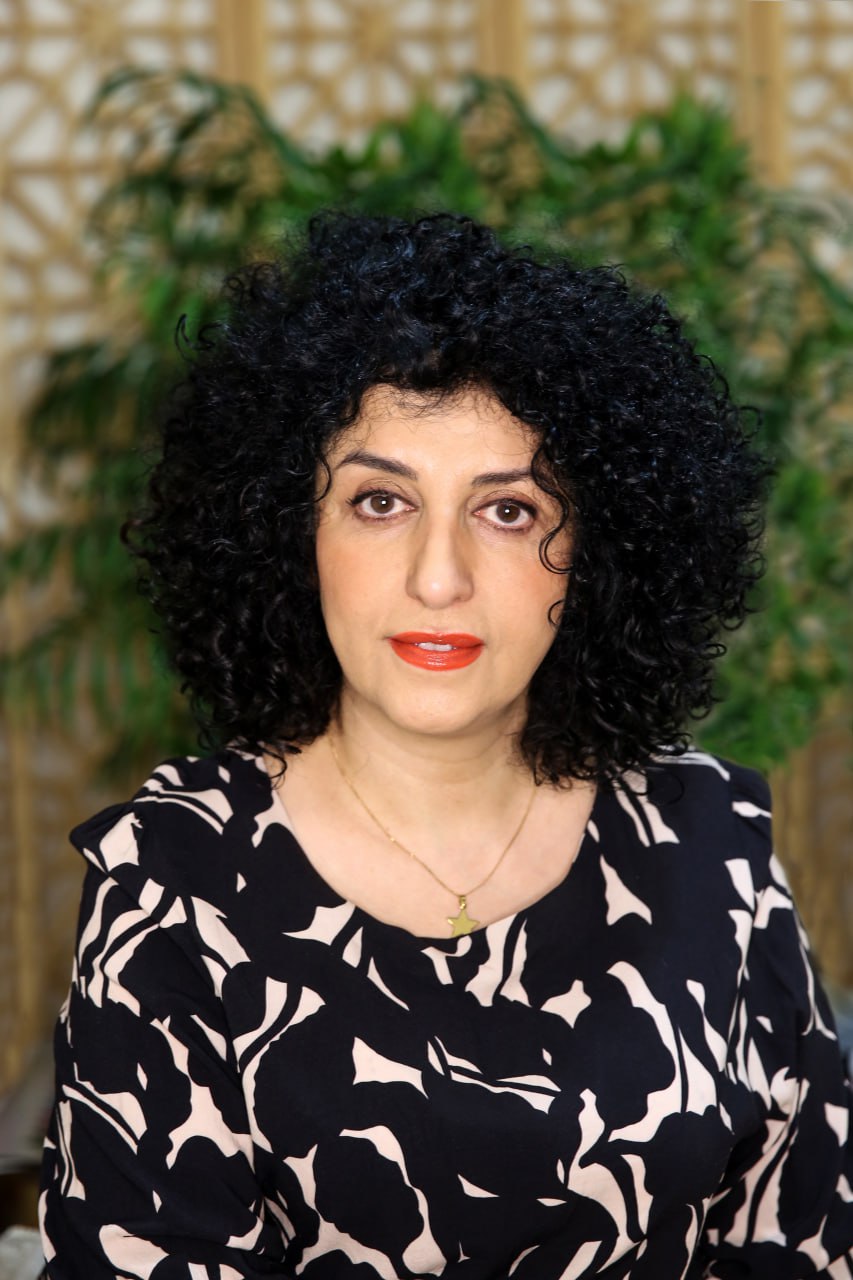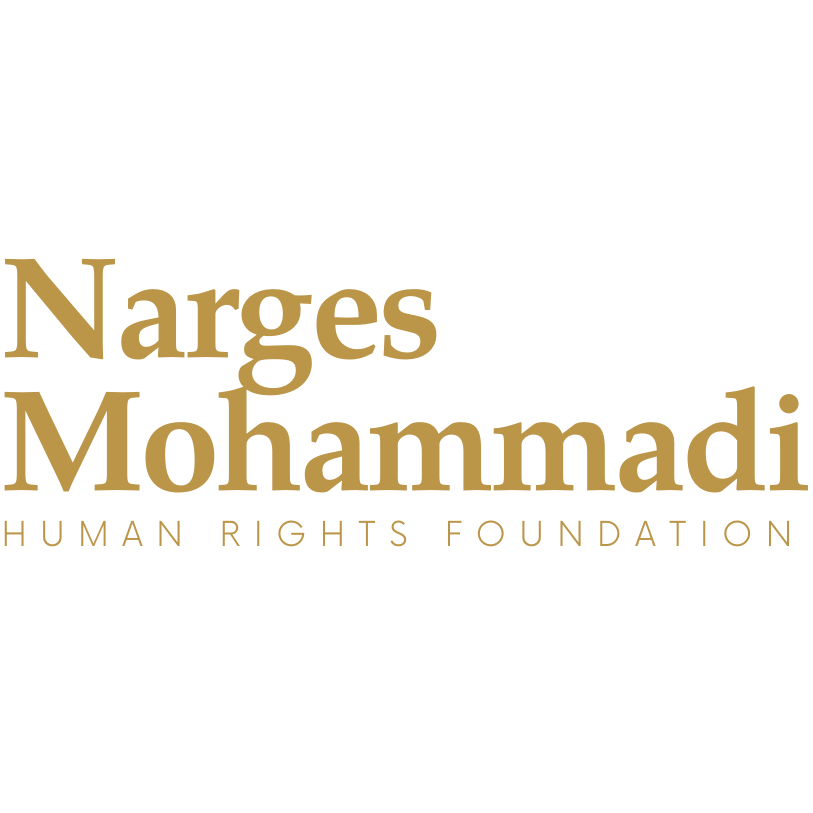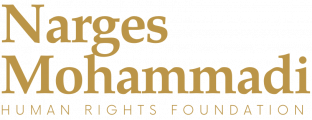
The Role of Women in the Contemporary History of Iran in the Process of Secularism
Narges Mohammadi’s Opinion Piece on Women’s Rights Featured in El País Ahead of International Women’s Day 2025
March 2025 – Nobel Peace Prize laureate and renowned human rights activist Narges Mohammadi has penned a compelling opinion piece for El País, Spain’s leading newspaper, marking International Women’s Day. In this article, she sheds light on the ongoing struggles and resilience of women fighting for their rights globally, with a particular focus on the oppression and resistance of women in Iran. Mohammadi’s words serve as both a call to action and a testament to the unwavering courage of those who continue to demand justice and equality in the face of systemic repression.
The 2022 protests in Iran revealed the intersection of multiple historical injustices—an era marked by discrimination, oppression, and exclusion, yet also filled with hope, resistance, and struggle. One of the central themes of these protests was the historic oppression of women, although the persecution of ethnic minorities, religious groups, and other marginalized communities in Iran was equally significant. Women have historically been placed in a subordinate position, often ignored, which is why their voices and political agency resonated louder than any other during these protests. Today, three women from ethnic minorities in Iran—Pakhshan Azizi, Varisheh Moradi, and Sharifeh Mohammadi—have been sentenced to death, not by mere chance, but precisely because of the role of this movement and the place of women within it.
The women of today’s Iranian society are the heirs of decades of relentless struggle by women who, in many cases, remain unnamed in official historical narratives. However, scattered reports and limited historical records reveal the role of women in the Constitutional Revolution of 1906, showing that the fight against discrimination and for equality dates back to that era, and even earlier. From the outset, this struggle encountered the rigid framework of religion, which is why women have played a prominent role in the process of secularism in Iran’s modern history.
In other words, the fight for gender equality has unfolded within the broader desire for secularization. During the Constitutional Revolution, groups of women—mostly from privileged classes—established or joined institutions such as modern schools, clinics, and various associations, significantly improving the lives of many women. They also opposed laws rooted in Islamic doctrine and traditional patriarchy. For instance, they took a stand against polygamy and the unequal right to divorce. In this turbulent period, women founded schools, clinics, and orphanages across various cities. These new schools were structurally linked to women’s organizations of that time, which provoked the opposition of some Shiite clerics. Some anti-constitutional clerics even issued fatwas against modern girls’ schools, declaring them un-Islamic. This led to the emergence of more radical groups of women who began questioning the authority of religious leaders. Although the Constitutional Revolution ultimately denied women political participation, they organized themselves and played a significant role in the social transformations of that period. Over time, women increasingly opposed child marriage, forced marriages, polygamy, and the imposition of hijab.
Janet Afary, a contemporary scholar and historian, describes the Constitutional Revolution as a “turning point in Iranian women’s history.” In her research The Iranian Constitutional Revolution, she explains how Muslim, Armenian, Zoroastrian, Babi-Azali, Bahá’í, and Jewish women united in their demands for women’s rights, appeared in public spaces, gained visibility in newspapers, and established safe educational and political organizations. These platforms allowed women’s ideas, creativity, and energy to flourish, leading to new initiatives. One such figure was Táhirih Qurrat al-‘Ayn, who was the first woman to unveil in public, simultaneously declaring that with the advent of a new era, Islamic laws had become obsolete. Additionally, the Secret Women’s League and Shokoufeh magazine were among the first organized women’s movements in Iran, focusing on the establishment of girls’ schools and securing women’s right to education—an effort that inevitably clashed with the religious establishment of both the state and society. Women’s struggles during the Constitutional Revolution intensified the confrontation between religious laws and modern civic elements, leaving behind a legacy that was more radical, democratic, and secular.
Decades after the Constitutional Revolution, on the first International Women’s Day following the 1979 Iranian Revolution, women organized mass protests against the policies of the newly established Islamic regime. In these demonstrations, they not only resisted the imposition of compulsory hijab but also demanded broader gender equality and freedom for all members of society. Just weeks after the February 1979 revolution, women had already formed numerous organizations, groups, and associations. These protests stand as one of the most remarkable milestones in the history of Iranian women’s struggles, marking the emergence of women as a powerful and independent movement. The political agency of women at that time astonished both the ruling government and opposition groups alike. In the chaotic days following the revolution, the bravery and awareness of protesting women were extraordinary. They foresaw the dark days ahead and insisted on the right to choose their attire, gender equality, and the restoration of women’s revoked rights—demands that directly contradicted the values of the Islamic government and its religious laws. Overall, the emphasis on gender equality remains one of the most prominent manifestations of secularism in contemporary Iran, and in recent years, it has become even more pronounced.
During the March 8, 1979, protests, women also highlighted job security. Decades later, the increasing unemployment of women, especially educated women, has deepened inequality in Iran. Pervasive gender discrimination in employment, combined with the rising educational attainment of women in recent years, has expanded and deepened women’s legal struggle against discriminatory religious laws. Today, many female workers, precarious workers, and unemployed women consider Iran’s religious laws a major obstacle to their participation and progress in the labor market.
In the aftermath of the 2022 protests, women’s everyday resistance against the compulsory hijab has persisted, forcing the Islamic Republic to retreat to some extent. However, the legacy of women’s struggles teaches us that sustained collective resistance and effective organizing remain the most powerful pathways toward women’s liberation—and, by extension, the liberation of society itself.
Narges Mohammadi
February 17, 2025
Tehran, Iran
مقاله تحلیلی نرگس محمدی برای ال پایس اسپانیا به مناسبت ۸ مارس ۲۰۲۵
نقش زنان در تاریخ معاصر ایران در روند سکولاریسم
اعتراضات 1401 (2022) در ایران روایتی از تقاطع چند ستم تاریخی به دست داد. تاریخی آکنده از تبعیض و سرکوب و طردشدگی و در عینحال سرشار از امید و مقاومت و مبارزه. یکی از محورهای کانونی این اعتراضات را میتوان حول تبعیض و ستم تاریخی علیه زنان جستوجو کرد اگرچه در جریان این اعتراضات ستم علیه قومیت ها، سایر ادیان و گروههای سرکوب شده در ایران نیز به همان اندازه بارز و برجسته بود. زنان به شکل تاریخی در موقعیت فرودست قرار داشته و نادیده گرفته شدهاند و از اینرو است که صدا و عاملیت سیاسی آنها در متن این اعتراضات بیش از هر صدای دیگری شنیده شد. اینکه امروز سه زن از قومیت ها در ایران (پخشان عزیزی، وریشه مرادی و شریفه محمدی) به حکم اعدام محکوم شدهاند نه از بازی روزگار بلکه دقیقا به خاطر موقعیت این جنبش و زنان است.
زنان امروزِ جامعه ایران وارث چند دهه مبارزه بیوقفه زنانی هستند که بسیاری از آنها حتی در حد یک نام نیز جایی در تاریخنگاری رسمی ندارند. اما گزارشهای پراکنده و معدود اسناد به جا مانده درباره نقش زنان در انقلاب مشروطه (1906)، نشان میدهد مبارزه زنان برای رفع تبعیض و برابری، به نهضت مشروطه و حتی کمی پیش از آن برمیگردد. مبارزهای که از آغاز با پوسته سفت و سخت مذهب برخورد کرد و چنین است که زنان در تاریخ معاصر ایران نقشی پررنگ در روند سکولاریسم داشتهاند.
به عبارتی مبارزه برای برابری زن و مرد در بستر میل به دنیوی شدن رخ داده است. در جریان نهضت مشروطه، گروههایی از زنان که اغلب متعلق به طبقات برخوردار بودند با تاسیس یا حضور در نهادهایی همچون مدارس جدید، درمانگاهها و انجمنهای مختلف دگرگونی چشمگیری در وضعیت زندگی بسیاری از زنان به وجود آوردند. آنها همچنین به مخالفت با قوانینی پرداختند که ریشه در اسلام و فرهنگ کهنه مردسالاری داشت. برای مثال میتوان به موضعگیری زنان در قبال حق طلاق و چندهمسری مردان اشاره کرد. زنان در دوران پرتلاطم مشروطه در شهرهای مختلف مدرسه و درمانگاه و یتیمخانه تاسیس کردند. این مدارس جدید رابطهای سازمانی با انجمنهای زنان در آن دوره داشتند. این سبب شد که بخشی از روحانیت شیعه در برابر مدارس دخترانه جدید و نهادهای تازهتاسیس آنها قرار بگیرند. برخی از روحانیون مخالف مشروطه علیه مدارس جدید دختران فتوا دادند و آنها را مخالف اسلام دانستند. این باعث شد که گروههای رادیکالتری از زنان نیز پا را فراتر گذاشته و نسبت به مرجعیت علمای مذهبی ابراز تردید کنند. اگرچه در قانون مشروطه زنان همچنان از مشارکت سیاسی محروم ماندند اما آنها با سازمانیابی خود نقشی برجسته در تحولات اجتماعی آن دوره بازی کردند. زنان به مرور به مخالفت با ازدواج زودهنگام و بدون عشق زنان، حق طلاق و چند همسری مردان و تحمیل حجاب پرداختند.
ژانت آفاری، پژوهشگر و مورخ معاصر، در پژوهش با عنوان «انقلاب مشروطه ایران»، انقلاب مشروطه را «چرخشگاهی در تاریخ زنان ایران» میداند و مینویسد که زنان مسلمان، ارمنی، زردشتی، بابیازلی، بهایی و یهودی برای حقوق زنان همصدا شدند و در مجامع عمومی ظاهر شدند و فضای تازهای در روزنامهها به دست آوردند و سازمانهای آموزشی و سیاسی امنی تاسیس کردند که در آنها افکار، ذخایر و انرژی خلاق زنان جلا مییافت و معطوف به طرحهای جدید و نو میشد.از آن جمله میتوان از طاهره قره العین نام برد که برای اولین بار در فضای عمومی کشف حجاب کرد و همزمان اعلام نمود که با ورود به عصر جدید، قوانین اسلامی باطل است. همچنین اتحادیهی غیبی نسوان و مجلهی شکوفه از نخستین کنشهای سازمان یافتهی زنان در ایران بود که با تلاش برای تاسیس مدارس دخترانه و به دست آوردن حق آموزش برای زنان گره خورده بود و به ناگزیر با فضای مذهبی حاکم بر دولت و جامعه وارد تنش میشد. مبارزه زنان در جریان انقلاب مشروطه موجب تشدید مواجهه قوانین مذهبی با عناصر مدنی مدرن شد و میراثی رادیکالتر، دموکراتتر و سکولارتر از آن برجا گذاشت.
دههها بعد از انقلاب مشروطه، زنان در نخستین هشت مارس پس از انقلاب 1357 (1979)، تظاهراتی اعتراضی علیه مواضع رژیم تازه قدرت گرفتهی اسلامی برگزار کردند. زنان در این اعتراضات نه تنها در برابر تحمیل حجاب اجباری ایستادگی کردند بلکه در پی خواستههای مهم دیگری چون برابری زن و مرد در ساحتهای مختلف و تضمین آزادی برای همه افراد جامعه بودند. تنها چند هفته از بهمن 57 میگذشت و زنان توانسته بودند بسیاری از نهادها، گروهها و انجمنهای خود را شکل دهند. این اعتراضات از درخشانترین نقاط عطف مبارزه زنان در تاریخ معاصر ایران به شمار میرود که منجر به این شد که زنان در قامت جنبشی قدرتمند و مستقل اعلام حضور کنند. عاملیت سیاسی زنان در آن دوره هم با حیرت حکومت و هم با حیرت احزاب و گروههای مخالف و منتقد روبرو شد. در روزهای پر آشوب پس از انقلاب 57، تهور و آگاهی زنانِ معترض رشکبرانگیز بود. آنها با پیشبینی روزهای در راه و دیدن آیندهای تیره، بر حق پوشش اختیاری، برابری زن و مرد و بازگرداندن حقوق سلبشده زنان تاکید داشتند. این خواستهها آشکارا در تضاد با ارزشهای حکومت اسلامی و قوانین فقهی بود. به طور کلی تاکید بر برابری زن و مرد از مهمترین جلوههای سکولاریسم در ایران معاصر به شمار میرود که در سالهای اخیر جلوهای بارزتر پیدا کرده است.
زنان در اعتراضات هشت مارس 1357 بر امنیت شغلی هم تاکید داشتند. با گذشت چند دهه از آن روز، بیکاری زنان به خصوص زنان تحصیلکرده بر عمق نابرابری در ایران افزوده است. تبعیض جنسیتی گسترده در زمینه اشتغال در کنار افزایش تحصیلات زنان در سالهای اخیر سبب شده که مبارزه حقوقی زنان با قوانین تبعیضآمیز شرعی، ابعادی گستردهتر و عمیقتر پیدا کند. امروز بخشهای گستردهای از زنان کارگر، بیثباتکار یا زنان بیکار قوانین مذهبی حاکم را یکی از موانع عمده حضور یا پیشرفت در بازار کار میدانند.
در روزهای پس از اعتراضات 1401، مقاومت روزمره زنان در برابر تحمیل حجاب ادامه داشته و آنها توانستهاند تا حد زیادی حکومت اسلامی را به عقب برانند. با اینحال میراث به جا مانده از مبارزه زنان به ما میآموزد که استمرار در مقاومت جمعی و تلاش برای سازمانیابی موثرترین راه برای آزادی زنان و به طبع آزادی جامعه است.
نرگس محمدی


